The Protests Of Hawaiians Before Colonization

The protests of Hawaiians before colonization
NO. 1
In regard to cultural survival and cultural sustainability, many traditional Hawaiian practices like long distance voyaging, paddling, fishing and surfing is very important, as rom the start of the 19th century to 1970, western colonization almost destroyed Hawaiian culture. In ‘The Struggle for Hawaiian Sovereignty’, by Haunani-Kay Trask, she writes, pg.9, ‘’Entering the U.S as a Territory in 1900, our country became a white planter outpost, providing missionary-descended sugar barons in the islands and imperialist Americans on the continent with a military watering hole in the Pacific—By 1970, rural Hawaiian communities were besieged by rapid development. Urbanization brought an influx of rich haole from the American continent, who unlike tourists, wanted to live in Hawai’i. Evictions of Hawaiians lead to increasing protests, especially in communities scheduled for residential and commercial development.’’
Examples of these protests was one that occurred in 1976, by Isaiah Helekunihi Walker with the creation of Hui O He’e Nalu (club of wave sliders) for preservation of control over North Shore Waves. He voiced concern about an endangered Hawaiian space, or ‘ka po’ ina nalu, which translates to the ‘surf zone’. When Captain Cooke arrived in Hawai’i, he believed the Polynesians were skilled navigators and surfers, as they were able to migrate, or sail, against powerful sails and winds from Asia to the pacific islands. Unfortunately, the missionaries that came decades later deduced that surfing was a ‘barbaric activity’, and with the success of the Christians, Hawaiian men and women especially, were discouraged from boxing, wrestling, or surfing, which was regarded as an act of resistance for both men and women.
NO. 2
The cultural practices of paddling are another tradition that survived against western colonialism. It was made with canoes, and they were mostly made up from trees, coconuts, or kol trees. In ‘The story of Albert Kamilla Choy Ching, Jr.’ it explains the cultural aspect of paddling and what it means to the Native Hawaiians. ‘’Al was a natural for paddling. He had keen eye-hand coordination and excelled as a steersman. He also loved to teach, and his high school coach John Kapua had taught him enough about paddling technique during his sculling year at Kaimuki for Al to want to improve himself and others. ‘I kept coming back [to paddling] because there was a desire to get better. There never was a desire to get to the very top—-it just came. I wanted to get a little better, and then I figured maybe I can beat that guy and then the next guy…. Before you know it, there’s a lot of guys behind you and you never intended to be that way, ‘’ pg. 4. But on pg.9, the meaning of paddling delves deeper as Al explains, ‘’I enjoy watching out people learn, how they came up from nothing. And if any of them win a race in the state championship, that makes me happy, real happy. Just watching them. Because I remember when I won…. All the things that I learnt through canoeing come from my Hawaiian side. How to look at the clouds. How to look at the ripples on the water and to see how the water is running. Even navigating backwards…the canoes did a real lot for me, kept my health, kept my tradition, kept me in touch with Hawai’i.’’
NO. 3
This co-exists with the nature of the fishponds, that ‘’played a spiritual, cultural, and political lives of the people. To the native Hawaiians there is a direct spiritual connection between man, god(s) and nature. As noted by Minerb, the natural environment of the land ‘aina’ and sea ‘kai’ and all things contained within it are perceived to be sentient, divine ancestral forms that have extrasensory perception, and interrelate with people as a family. Thus, to Hawaiians, nature is not only conscience, ke ea o ka ‘aina (life-force of the land) but much of it is divine.’’ pg. 2 of Ancient Hawaiian fishponds.
NO. 4
Hawaii was a group of islands that used a social hierarchy and status was a sign of great importance. Competition, including that of the fishponds, and cooperation were ideal values, as traditionally the ideal is that of chiefly status who were obliged to care for those in there lineage. The hierarchy goes from chief, warriors, experts and craftspeople, and fishermen. Another cultural tradition is long distance voyaging, where Hawaiians sailed in large canoes and traveled across huge waves to get to the nearest land over long distance and time to discover new lands, which is what Ancient Hawaiians did. An example would be the great Hawaiian surfer Eddie Aikau who sailed long distance, over giant waves during the 70’s. The voyage is highly dangerous, as the ocean is temperamental, but lots of sailors today even, do it to feel closer to their ancestors and to remember their home. The comparison and contrast between all four, long distance voyaging, paddling, fishing, and surfing in regard to issues of sustainability and cultural survival is that by doing these activities, it was seen to the Hawaiian people as an act of resisting the degrading, humiliating andappropriating acts that colonialism brings with it, as they were immersed with the natural world.
More Posts from Arieso226 and Others
Read all of the books on the so-called "banned list;" I myself have yet to read Fahrenheit 451, but I know what's on my to do list.
Intersectionality in regards to social science
Modern society in America, as a fact, has adapted the constructed norms of the Victorian Era in England, by which I mean how economic class, race, and sexuality is managed, or for lack of a better term, is misconstrued with eurocentric ideals; Since the creation of the United States, the only way you would be able to receive the privileges society holds was if you were white, straight and economically secure.

Throughout the decade, society has changed drastically when it comes to talks on these particular subjects, but we still have a long way to go in advancing a better community for everyone. Intersectionality, created or introduced in the 1980s, ‘‘as a heuristic term to focus attention on the vexed dynamics of difference and the solidarities of sameness in the context of discrimination and social movement politics. It exposed how single-axis thinking undermines legal thinking, disciplinary knowledge production, and struggles for social justice. Over the intervening decades, intersectionality has proved to be a productive concept that has been deployed in disciplines such as history, sociology, literature, philosophy, and anthropology as well as feminist studies, ethnic studies, queer studies, and legal studies.’’

So intersectionality is quite popular in learning all these studies. Patricia Hill Collins, a sociologist famous for writing the book ‘Black Feminist thought’ and ‘Race, Class, and Gender, writes about the politics of gender and race, and how they shape and influence knowledge. Epistemology is the study of knowledge, and Collins theorized that race and gender are part of our ‘social being’. ‘‘Social science argues that to truly understand society and group life one must be removed from the particulars and concerns of the subjects being studied. In this way, subjects are turned into objects of study. Collins’ (2000) alternative epistemology claims that is it only those men and women who experience the consequences of social being who can select ‘topics for investigation and methodologies used’ (p. 258). Black feminist epistemology, then, begins with “connected knowers,” those who know from personal experience—Rather than believing that researchers can be value-free, Collins argues that all knowledge is intrinsically value-laden and should thus be tested by the presence of empathy and compassion. Collins sees this tenet as healing the binary break between the intellect and emotion that Eurocentric knowledge values.’’


Mean World Syndrome
NO. 1
Mean World Syndrome is a theory the sociologist George Gerbner, creator of the Cultural Indicator’s Project, where three quarters of Americans believe in high level of crime, even though statistics show it is low. In the media, there is too much sex and violence, more so than the average person will ever see a day in their lives, and it has become repetitive, too routine, as the storytelling of violence seem ‘normal’. Since 1995, the demand for guns to ‘protect themselves’ has been at an all time high, and so is the fear, fear that everyone in the world is a suspect. But most importantly, is the image of the bad guys coming to get them. 2/3 of Americans get their information from the media, mostly the news, which creates negative stereotypes of minorities, who are seen as violent and aggressive.
NO. 2 Take for instance, Latina’s, who make up 15% in population in America, are portrayed by the media as aggressors, seen as ‘rapists and gangbangers’ or ‘murderers’. They are also the subject of illegal immigration, which all together creates dehumanizing effects. Then, there’s the vilification of Arabs and Muslims, as bloodthirsty terrorists, that are linked to violence and terror, and the subject of torture/ing of these people is ‘okay as long as it’s a good guy doing it’’. 39% of Americans actually believes that American-born Muslims are not loyal to the country’s ideals, and so not loyal to them. And finally, African-Americans are twice as likely to be seen as perpetrators. In the media, it is harmful showing black people as great middle/class, successful people, then as violent and aggressive in the next slide, as if to say some people choose that type of lifestyle, that they are simply a product of their environment. White people are five times more than likely to be criminalized by whites than black people, yet it’s not white people being shown almost everyday on the news for braking crimes.
The result of all this is the active fear in everyday Americans that makes us less likely to be compassionate, and more hardened to anyone and everyone. It also increases a high demand for national security, and believing that we have to lock these ‘criminals in cages where they belong.’
Cultivation Theory is the examination of the long term effects of television. Media cultivates a set of values, meanings, expectations, understanding, etc. which is the culture now in the modern century. Mass media replacement of community-based storytellers, it advances corporate interests (increasing profits and sales) since Americans spend a lot of time with the media. The effects are becoming more systemic and all encompassing. We need to start asking questions, like who is being represented in the media, who is the victim, and who is in the cast, and what are their fates. Who is generally casted as the good guy, and who is casted as the bad guy. We can look to the Media Database (IMDb) to see who is making the cultural object, and what is the main subject. Mean World Syndrome relates to this theory, through intersections of race, gender, ethnicity, criminal justice and the international border. We need to understand who is creating these TV shows/films, since America has such a global reach, it attracts the largest audience. Sociologists are not condemning media, but the constant repetition of ‘happy violence’—where in the film, show, or media, the good guy faces has a challenge, fights and action and explosions reoccurs, he stops the evil doer, saves the damsel, and the day is saved! It’s boring, cliché and the same story over and over again— and the various franchises and storylines springing from these corporations because it slows down progress and keeps negative stereotypes alive, some of them extremely damaging.
The Black Women Movements
NO.1
Many movements came out after the Emancipation (freeing of the slaves) Proclamation, and even though some were hand-chosen, they were mostly male oriented, whereas women movements were pushed aside and forgotten.
The Black Women’s National Club Movement was the first woman movement set in the 1890s, where their primary concern was for family and the community. They desired freedom by using centering family values and unity, and the dynamic relationship between black women and men. ‘’Black women organized, throughout the nineteenth century, at first on a local, later on a state and national level, to undertake educational, philanthropic and welfare activities. Urbanization, the urgent needs of the poor in a period of rapid industrialization and the presence of a sizeable group of educated women with leisure led to the emergence of a national club movement of white women after the Civil War. Similar conditions did not begin to operate in the black communities until the 1890s, when local clubs in a number of different cities began almost simultaneously to form federations.’’
Other movements, like the National Federal of African American women started in 1895, where their concerns were resistance to slavery, black women’s concern for education, the lynching of children, men and women, sexual abuse from white men, healthcare, childcare for orphans, care for the elderly, job training for the youth and various but broad subject for social justice.
The National Council of Negro Women was another important movement, ‘’ founded and organized in 1935 by the late Dr. Mary McLeod Bethune for the purpose of planning and directing Negro women to greater economic, social, educational and cultural development in local communities and on the national and international levels. The aspects of the national program are therefore varied and include departments which deal specifically with citizenship education, human relations, international relations, education, labor and industry, archives and museums, public relations, religious education and fellowship, social welfare and youth conservation. The National Program Committee feels that conferences may be used effectively as a technique to synthesize the activities of these various departments.’’
NO. 2
Most of these movements were discarded and disbanded because of the lack of support from black men and the racism they were also receiving by white women and men alike. The attitudes of sexism and racism go hand in hand, and as we progress through the centuries, a study comes out of that: Black Women’s Studies. ‘’Black Women’s Studies emerged in part because of the failure of Black and Women’s Studies to address adequately the unique experiences of black women in America and throughout the world. Attempts to celebrate the existence of distinct black female literary tradition in America, which can be traced further back in time, also fall under the rubric of Black Women’s Studies because they acknowledge the politics of sex as well as the politics of race in the texts of black women writers. This celebration has taken place in two phases. The first phase is characterized by efforts to document that such a tradition exists.’’
Education is power, since knowledge, the knowledge of our past and our present can only help us persevere to our future, and that has been denied to us since the time of slavery. ‘’Education has persisted as one of the most consistent themes in the life, thought, struggle, and protest of black Americans. It has been viewed as a major avenue for acquiring first class citizenship. There is a large body of research that takes into account the educational experiences of Afro-Americans. Black female educators such as Mary McLeod Bethune, Charlotte Hawkins Brown, Lucy Laney, Fanny Jackson Coppin and Nannie Helen Burroughs are mentioned in some Afro-American history sources and in some instances are receiving attention in theses and dissertations. While this publication documents ‘the historical significance of black female educators in twentieth century America, beyond the role of teacher’, it is important that we establish to some extent an historical context for understanding the very basic struggle in which black women have been engaged to acquire an education and to utilize that education as a professional.’’
NO. 3
The main statement discussed repeatedly in Black Women studies is centered around race, class, gender and sexuality, which all have an important part to play while surviving in America. That it is why it is so important to discuss such serious topics with like-minded individuals, those who yearn for the freedom and privileges that other citizens have, because even though we have our freedom, oppression is still prevalent. Around the world, women of every origin face the same problems. ‘’ The history of women’s movements in the Middle East has received much attention in recent years. Studies have been devoted to the advent of these movements, their development, activities, politics, organizing style and central figures. Preliminary attempts at comparative analysis of these women’s movements have also been made. In 1999, Ellen Fleishmann published a comprehensive comparative article entitled, ‘The Other ‘Awakening’: The Emergence of Women’s Movements in the Modern Middle East, 1900-1940’. In this first stage, ‘The Awakening’, women and men began to raise the issue of women’s status and to question related social practices. This stage is also typified by the emergence of varied women’s organizations and by women’s efforts to enhance girls’ education. In the second stage, ‘‘Women and Nationalism’, women adopted nationalism as a liberating discourse linking their involvement in nationalist movements with women’s emancipation. The third stage, designated ‘State Feminism’, is characterized by ‘women’s co-optation by, and collusion and/or collision with, the state-building project, resulting in the evolution of state feminism.’’
NO. 4
In Ireland, the ‘problems is that most mechanisms for choosing representatives tend to refract, not reflect, the composition of society, and some groups will always be marginalized even if not formally. The Northern Ireland Women’s Coalition is only one example of a movement party. Though unusual, more than 50 women’s parties have formed the world over 1945, in places such as Israel, Belarus, Russia, India, the Philippines, Belgium, and Iran. The experiences of these parties are diverse but in at least two other situations, Iceland and Israel, strong scholarship demonstrates that women’s parties have succeeded in drawing public attention to issues of female marginalization and put ‘gender politics on the political map for the first time.’ In Iceland, in particular, the effect of the women’s party in pressuring the other parties to adapt their behavior and policy commitments to facilitate inclusiveness is well documented.’’
In conclusion, women deserve to get attention for their efforts to change society just as much as anybody else who has felt the sting of oppression no matter what the gender. Race, sex, class and gender all define who we are in the society, and it is without the benefits of education given to all the people no matter where they come from, are we truly lost.

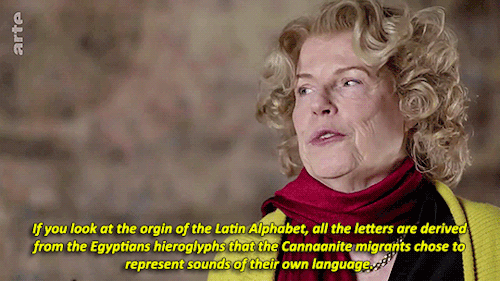
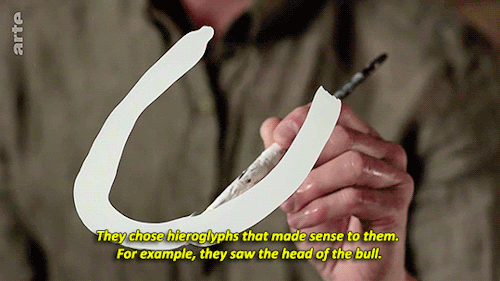
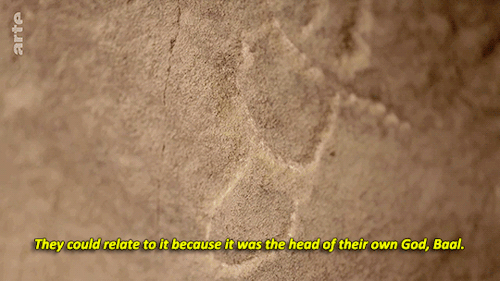
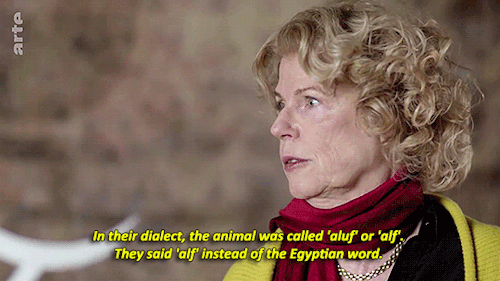
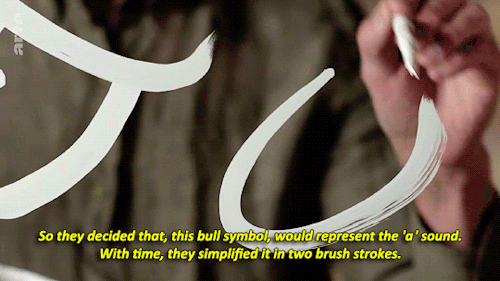
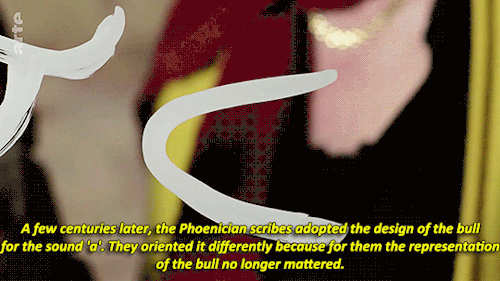
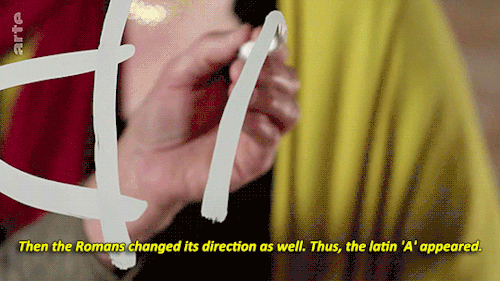

the origin of the letter 🇦
(from the documentary The Odyssey of the Writing, 2020)
Where are the black tumblr users that are still active on here at? please REBLOG
Seneca Village
NO. 1
The history of Seneca Village is fraught with history, opportunity, and endurance against racism and white supremacy. In 1825, a ‘‘25-year-old African American shoe shiner named Andrew Williams bought land in the middle of Manhattan, two years before slavery was abolished in New York. More free Black Americans followed, fleeing the disease and discrimination of downtown, and together they created the bustling settlement. The village was home to the most significant number of African American property owners in NY before the Civil War. Because those black men possessed property, they were allowed to vote. Irish and German immigrants could also live there, and white and black churchgoers often side-by-side.
NO. 2
As you can see, Seneca Village was a thriving community, living far from the dense population of downtown, despite NY's abolition law in 1827, discrimination severely limited the lives of the African-American populace. Seneca Village provided access to more space from the unhealthy and crowded conditions of the city. ''By 1855, there were 52 houses in Seneca Village. On maps of the area, most of the houses were identified as one-, two-, or three-story houses made out of wood. Archeological excavations uncovered stone foundations and roofing materials, indicating that they were well-built. Some of the houses were identified as shanties, meaning that they were less well-constructed. Land ownership among Black residents was much higher than that in the city as a whole: more than half owned property in 1850, five times the property ownership rate of all New York City residents at the time. Many of Seneca Village's Black residents were landowners and relatively economically secure compared to their downtown counterparts in the Little Africa neighborhood by Greenwich Village.''

NO. 3
Unfortunately, Seneca's village’s demise had to do with the construction plans of what the settlement is today, Central Park. William Cullen Bryant, ‘‘the editor for the New York Evening Post at the time, and Andrew Jackson Downing, an English landscape architect, started the park project together. The Special Committee on Parks was formed. They surveyed possible sites before selecting Seneca Village, even getting NYS officials to legislate the Central Park Act in July 1853, authorizing a board of five commissioners to start purchasing land and creating a fund to raise money and donations for the plan. Before the acquisition of Central Park, Seneca Village was referred to with derogatory and racial slurs. Advocates for Cental Park used the media to describe Seneca Village and other communities like them as ‘‘poor squatters living in shanties’’.

NO. 4
The residents fought against the city’s planning as they were legally entitled to do so as landowners. But the Central Park Act set aside the 775 acres of land in Manhattan from 59th to 106th streets between 5th and 8th avenues to create the country’s first major landscape public park. ‘‘There were roughly 1,600 inhabitants displaced throughout the area. Although landowners were compensated, many argued that their land was undervalued. Ultimately, all residents had to leave by the end of 1857.’’ The settlement was discovered in 2011 when archaeologists from Columbia University uncovered artifacts such as an iron tea kettle, a roasting pan, a stoneware beer bottle, fragments of Chinese export porcelain, and a small shoe with a leather sole and fabric upper. This article is dedicated to the people of Seneca Village and other ‘Little Africa’s’ settlements all over this country that historians and archaeologists are finding in recent times who have continuously fought against the struggles of race, class, and economic opportunities that this country’s governmental systems continuously try to sweep aside.
Artifacts and Archives: The Rediscovery… | Central Park Conservancy (centralparknyc.org)
A hero can go anywhere, challenge anyone, as long as has the nerve
#percyjackson#heroesofolympus
-
 arieso226 reblogged this · 4 years ago
arieso226 reblogged this · 4 years ago -
 arieso226 reblogged this · 4 years ago
arieso226 reblogged this · 4 years ago
26-year-old Anthro-Influencer Anthropology, blogger, traveler, mythological buff! Check out my ebook on Mythology today👉🏾 https://www.ariellecanate.com/
208 posts

